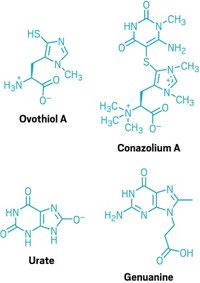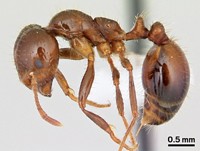Advertisement
Grab your lab coat. Let's get started
Welcome!
Welcome!
Create an account below to get 6 C&EN articles per month, receive newsletters and more - all free.
It seems this is your first time logging in online. Please enter the following information to continue.
As an ACS member you automatically get access to this site. All we need is few more details to create your reading experience.
Not you? Sign in with a different account.
Not you? Sign in with a different account.
ERROR 1
ERROR 1
ERROR 2
ERROR 2
ERROR 2
ERROR 2
ERROR 2
Password and Confirm password must match.
If you have an ACS member number, please enter it here so we can link this account to your membership. (optional)
ERROR 2
ACS values your privacy. By submitting your information, you are gaining access to C&EN and subscribing to our weekly newsletter. We use the information you provide to make your reading experience better, and we will never sell your data to third party members.
Environment
Bumblebees leave foot odor behind on flowers
Chemical signatures enable the insects to remember their prior landings and distinguish the smell of their nest mates and unfamiliar bees
by Sarah Everts
March 13, 2017
| A version of this story appeared in
Volume 95, Issue 11
Not only do bumblebees have smelly feet, but the insects also leave an imprint of their foot odor on flowers they visit. In fact, the hydrocarbon chemical signature is so strong that it can be detected for about 24 hours after being deposited. A team of researchers led by Richard F. Pearce of the University of Bristol reports that bumblebees visiting flowers can also decipher whether the leftover foot funk is their own, a nest mate’s, or that of an entirely unknown bumblebee. The researchers think being able to distinguish these odor prints could prevent bees from making redundant visits to the same nectar source (Sci. Rep. 2017, DOI: 10.1038/srep43872). Bumblebees aren’t the only insects to leave behind smelly foot residues as they go about their day: Wasps, termites, and ants also secrete mixtures of hydrocarbons from their feet that give each individual its own personal aroma. The secretions also help with adhesion and with avoiding desiccation. For bumblebees, their signatures often include (Z)-9-tricosene and other long-chain hydrocarbons, and the relative concentration of these components uniquely identifies an individual. The new findings represent the first time researchers have been able to show that bumblebees can distinguish their odor from that of their nest mates, Pearce notes.




Join the conversation
Contact the reporter
Submit a Letter to the Editor for publication
Engage with us on Twitter